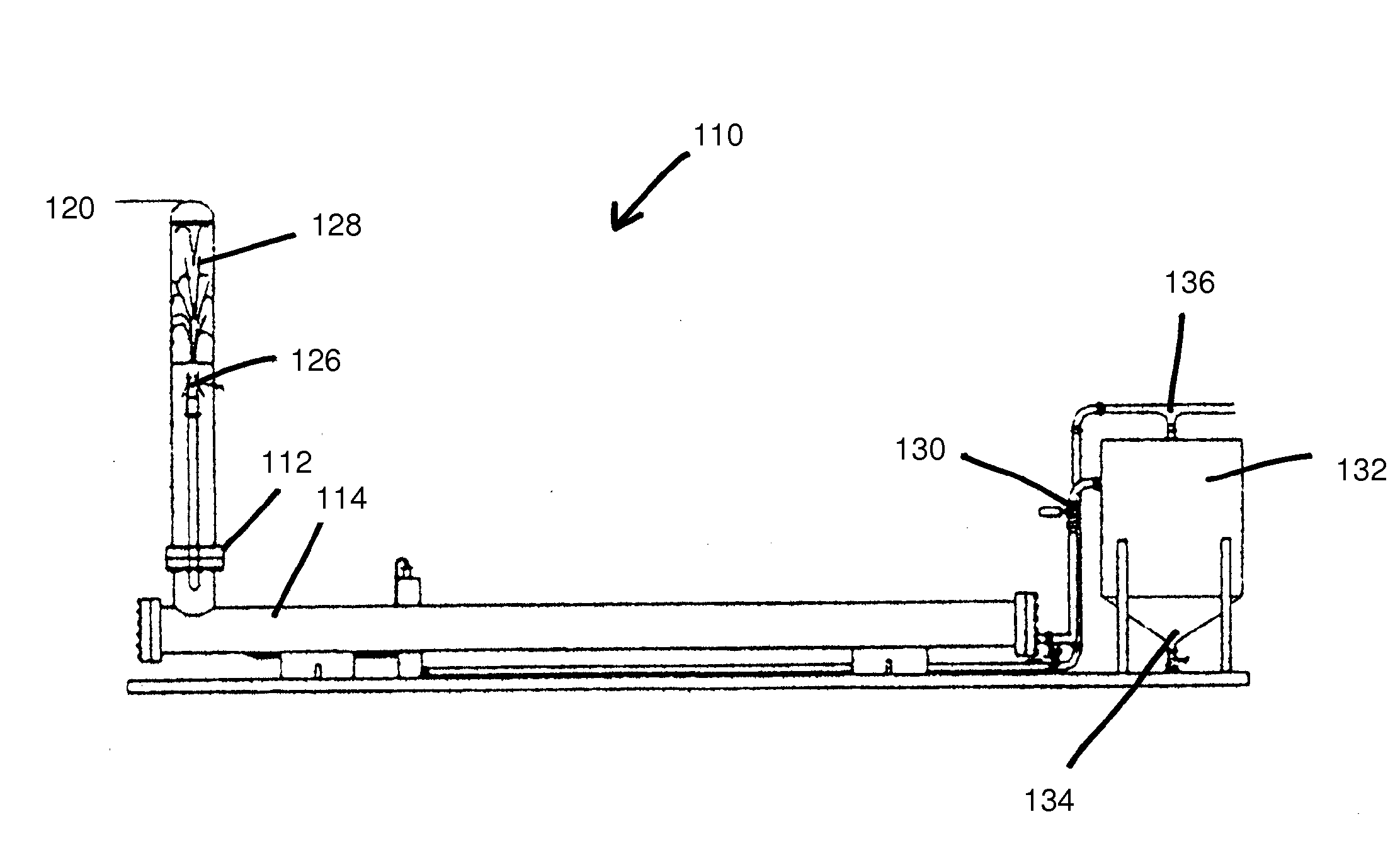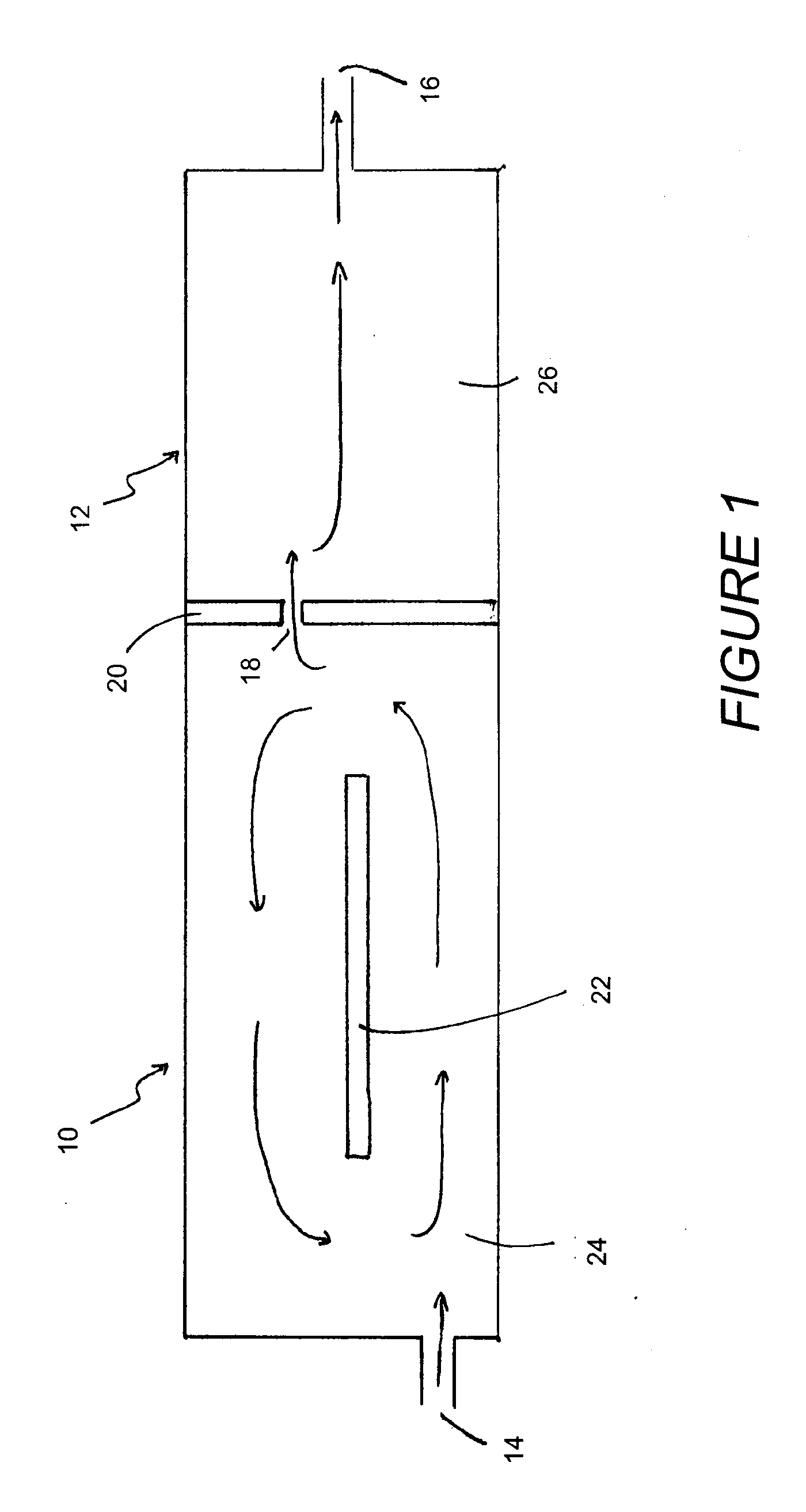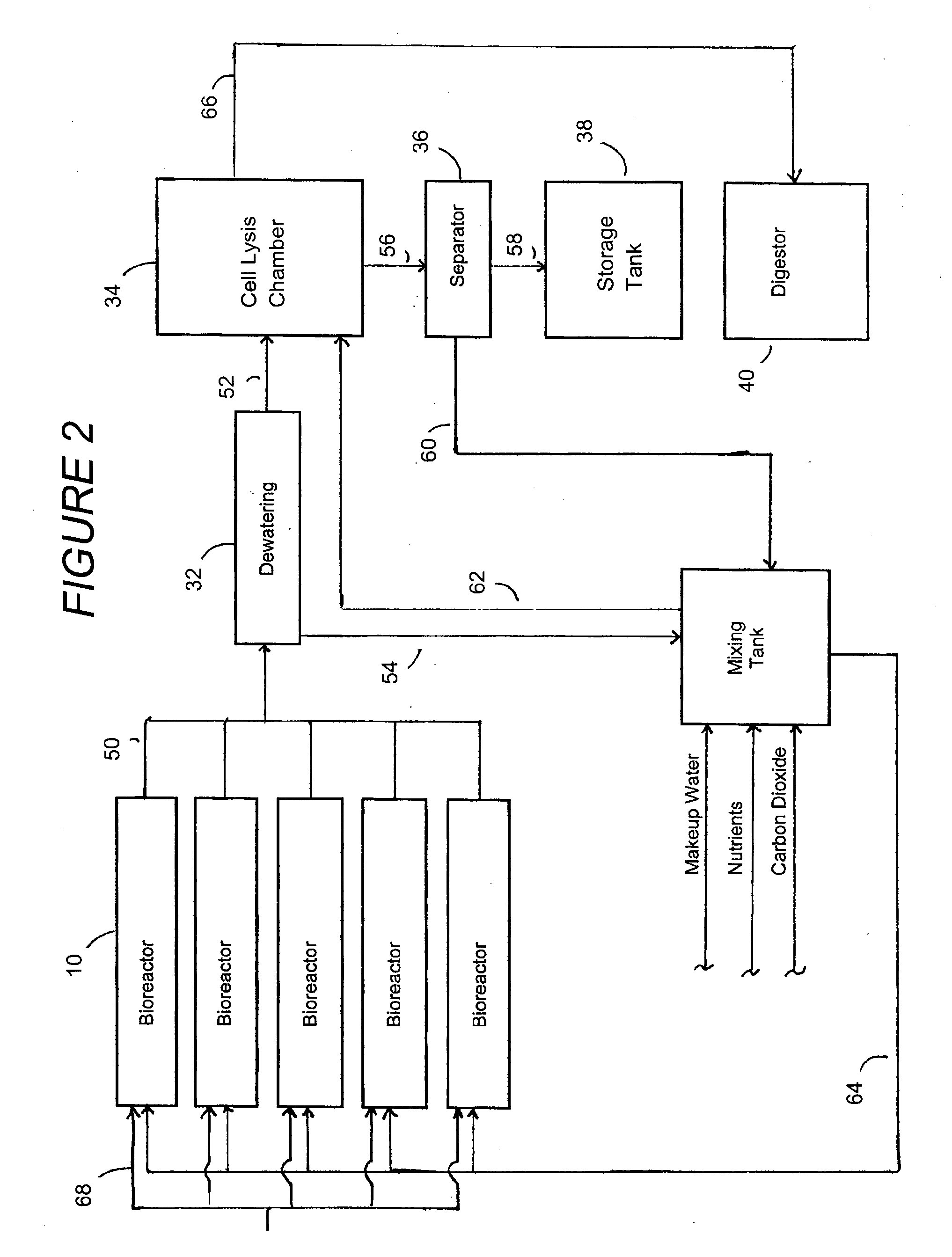System for fermentation using algae
a technology of algae and fermentation system, which is applied in the direction of specific use of bioreactor/fermenter, microorganisms, after-treatment of biomass, etc., can solve the problems of slow conversion of raw organic material into product, small amount of catalytic microorganisms present in the reactor, and low reaction ra
- Summary
- Abstract
- Description
- Claims
- Application Information
AI Technical Summary
Benefits of technology
Problems solved by technology
Method used
Image
Examples
embodiment 110
[0040]FIGS. 3-5 show another embodiment 110 of the system of the present invention mounted on a platform 111. Instead of a single fermentation reactor 10, this embodiment has a first reactor 112 and a second reactor 114. The first reactor 112 has a generally cylindrical shape and a biomass inlet 116. The biomass inlet 116 receives the processed biomass stream, such as algae, from a bioreactor 117 through a pump 115 into the first reactor 112. The second reactor 114 is in fluid communication with the first reactor 112 and is placed in an orthogonal relationship to the first reactor 112. A first valve means 118 placed between the first reactor 112 and the second reactor 114 controls fluid flow between the first reactor 112 and the second reactor 114.
[0041]The biomass stream entering the first reactor 112 has gas injected therein through a gas inlet 120 in fluid connection with the first reactor 112. The gas inlet 120 is located at one end of the first reactor 112, and the biomass inle...
first embodiment
[0043]The present invention achieves up to 80% reduction in the operating costs of a batch fermentation processes because the process is continuous. The fermentation reactor of the first embodiment optimizes fermentation reaction between the first and second sections. The system applies to fermentation of any raw organic material and adjusts the first and second section for an optimal reactor for any given set of operating conditions.
[0044]Additionally, the present invention provides an efficient resource for production of oil, an alternative to naturally occurring oil that must be harvested from the Earth. The present invention uses the biological processing of microorganisms, specifically algae, to process waste products, while creating usable resources. The present invention allows for the efficient or maximized collection of oil from the biological processing.
PUM
 Login to View More
Login to View More Abstract
Description
Claims
Application Information
 Login to View More
Login to View More - R&D
- Intellectual Property
- Life Sciences
- Materials
- Tech Scout
- Unparalleled Data Quality
- Higher Quality Content
- 60% Fewer Hallucinations
Browse by: Latest US Patents, China's latest patents, Technical Efficacy Thesaurus, Application Domain, Technology Topic, Popular Technical Reports.
© 2025 PatSnap. All rights reserved.Legal|Privacy policy|Modern Slavery Act Transparency Statement|Sitemap|About US| Contact US: help@patsnap.com



